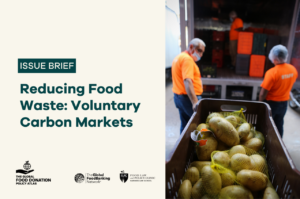By Hannah Rahim. Originally published in Petrie-Flom Center’s Bill of Health on February 28, 2024.
Food is Medicine interventions aim to prevent and treat diet-related chronic health conditions and reduce food insecurity by providing food to individuals and communities, in connection with the health care system. While Food is Medicine has been gaining prominence in recent years, it has also received some criticism. This article will explore the development of Food is Medicine and its limitations, and briefly offer recommendations for successful Food is Medicine initiatives.
Introduction to Food is Medicine
Poor diet is a leading cause of morbidity and mortality in the U.S. The burdens of suboptimal nutrition disproportionately affect individuals at a socioeconomic disadvantage and members of minority racial and ethnic groups. In addition to the direct health effects of unhealthy diets, diet-related chronic health conditions cost the U.S. economy approximately $1.1 trillion each year in health care costs and lost productivity.
As the evidence and attention around health burdens linked to poor diets is growing, health care and policy interventions are placing more emphasis on food and nutrition. This momentum has been accompanied by two changes: 1) a greater focus on nutrition security over food security, which reflects a shifting focus from food quantity (calories) to quality (nutrition); and 2) the incorporation of food-based nutrition interventions into the health care system.
Food is Medicine encompasses a range of food-based nutrition programs that provide food through the health care system. The most intensive interventions are prepared, medically tailored meals delivered to patients with complex diet-related chronic diseases who are unable to cook for themselves. Patients can access medically tailored meals through a referral from a medical professional. Medically tailored meals have been associated with lower hospital admissions. Less intensive initiatives include medically tailored groceries and produce prescriptions for low-income individuals with less severe illness. Medically tailored groceries entail healthy food items selected by nutritionists and given to patients, while produce prescriptions entail access to produce at low or no cost. These two initiatives have been associated with improved food security as well as lower blood sugar, blood pressure, and body mass index (BMI).
Food is Medicine emerged during the HIV/AIDS epidemic when organizations such as Community Servings in Boston provided nutritional and social support for people living with HIV/AIDS who had insufficient access to food. Food is Medicine initiatives were furthered by the Affordable Care Act, which required health care systems to conduct community health needs assessments. Food is Medicine has gained substantial attention over the last several years. For instance, the Rockefeller Foundation, National Institutes of Health, and Patient Centered Outcomes Research Institute have announced over $350 million in research funding for Food is Medicine.
Limitations of Food is Medicine
Individuals access Food is Medicine initiatives through the health care system, such as through physician referrals for medically tailored meals. This means that some limitations of the U.S. health care system extend into Food is Medicine. Many Americans struggle to access the health care system for reasons including insufficient insurance coverage, transportation barriers, lack of appointment availability, and health care avoidance due to experiences with discrimination. These limitations can also decrease access to Food is Medicine initiatives. Additionally, the health care system is overburdened – many primary care physicians are limited to short office visits with patients that are often insufficient for the physician to assess patients’ need for Food is Medicine programs. Relatedly, patient care coordination is poor, with many physicians rarely making referrals to existing nutrition counseling services despite the high need among patients.
Another concern is that, given the limited funding allocated towards food and nutrition (e.g., in 2019, the NIH invested $1.9 billion [5% of total funding] in nutrition research), funding Food is Medicine initiatives could prevent increased funding of more upstream food and nutrition initiatives (e.g., Supplemental Nutrition Assistance Program, Special Supplemental Nutrition Program for Women, Infants and Children, and National School Lunch Program). While Food is Medicine is often focused on individuals who are already ill, expanding upstream programs can reach more food-insecure families and prevent the occurrence of diet-related illnesses. Food is Medicine focuses on the medical aspects of nutrition, which could divert attention from systemic contributors to disease, such as commercial interests of food producers.
Recommendations for Food is Medicine initiatives
Although the limitations described above are valid, Food is Medicine initiatives are still critical to provide support to patients with chronic conditions for whom upstream programs like SNAP are not sufficiently intensive. While in theory, it would be ideal to prevent all diet-related conditions through appropriate upstream programs, the reality is that many people have diet-related chronic conditions that necessitate Food is Medicine programs. For instance, 38.4 million Americans have diabetes (11.6% of the U.S. population) and 20.5 million (6% of the U.S. population) have coronary heart disease. Therefore, the community-based provision of food through Food is Medicine should occur alongside population-level preventive programs like increasing access to food, education, and nutrition counseling.
To design the most effective Food is Medicine interventions, it will be important to conduct qualitative research that incorporates the perspectives of community members to understand which interventions work for which populations. This research should consider the diverse experiences and culture of the population at hand, such as language barriers that could interfere with nutrition education and whether the foods available will be appropriate for people with different cultural backgrounds.
It will also be essential to develop strategies to minimize barriers, such as health insurance and access to the health care system. Some states have implemented initiatives to integrate Food is Medicine into Medicaid, which can be valuable to expand access to broader groups of the population. Recent shifts in health care financing from fee-for-service to value-based care can create incentives for health insurers to emphasize health-related social needs like nutrition and invest in initiatives like Food is Medicine.


Health Law & Policy, Commentary
Freezing the Freeze: An Update on Litigation Challenging Trump’s Funding Freeze – HCIM
March 27, 2025